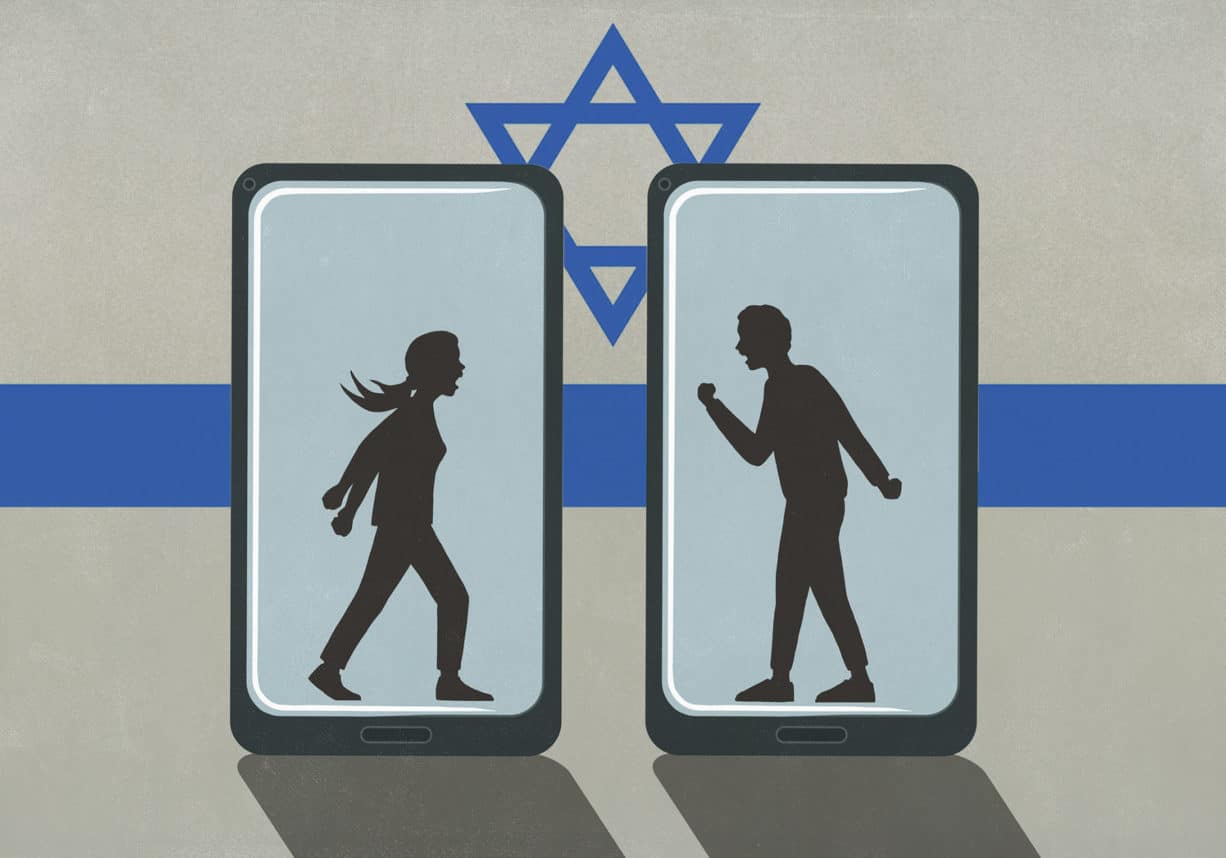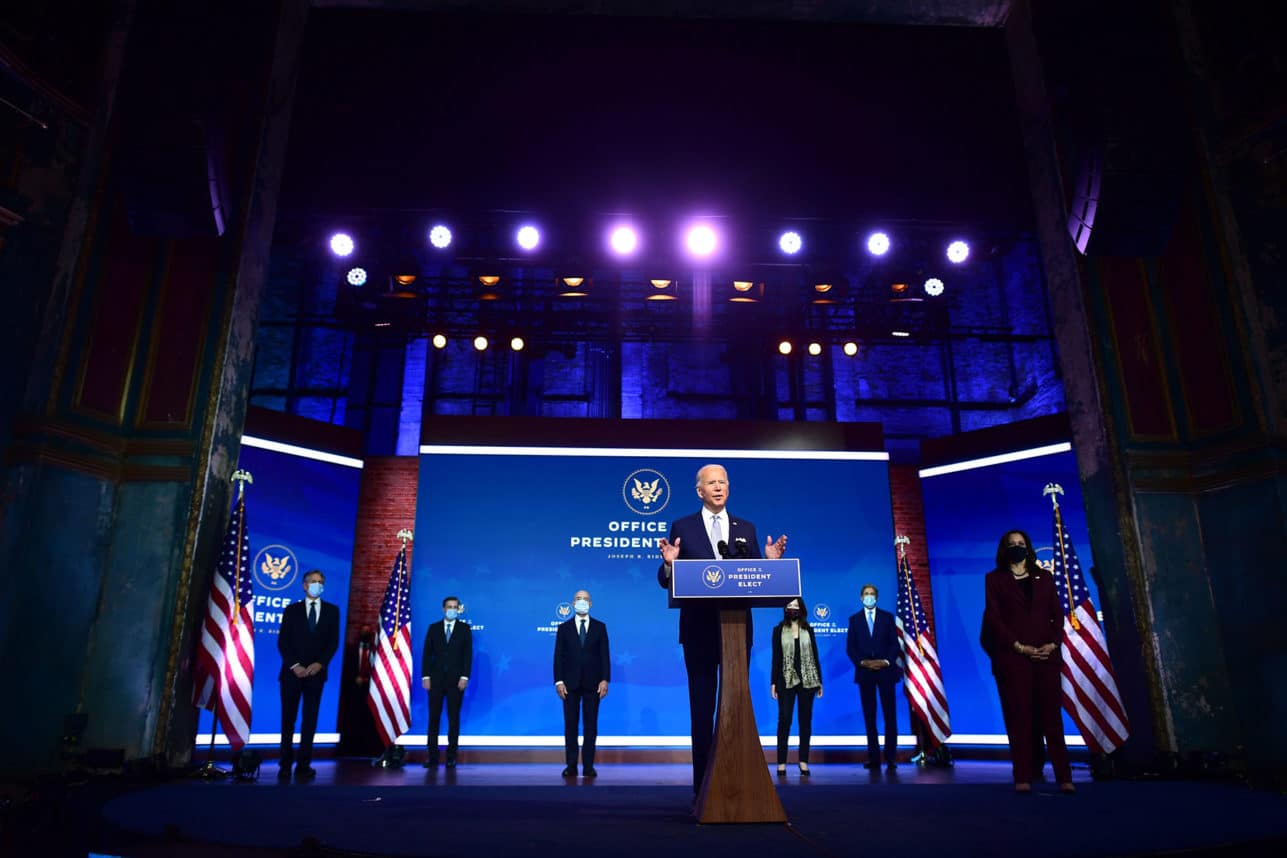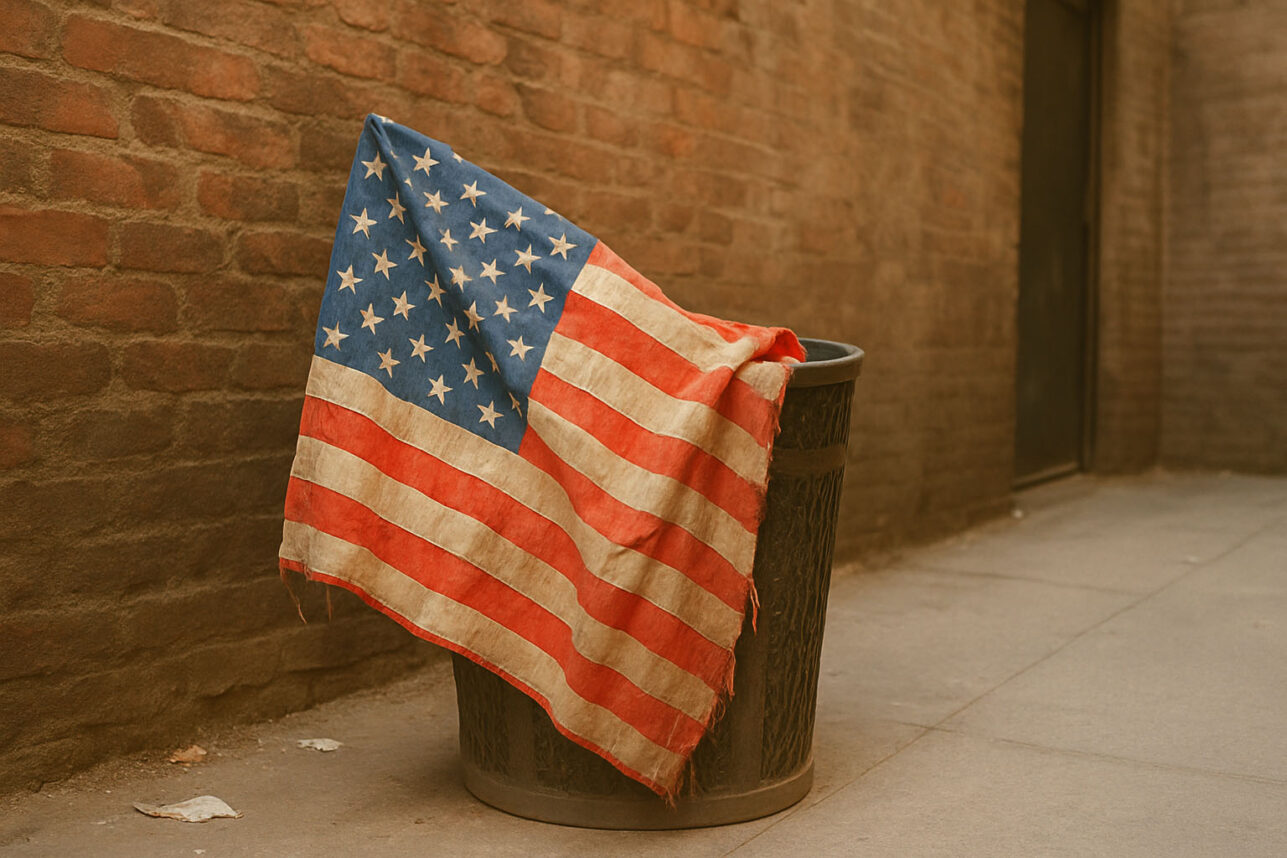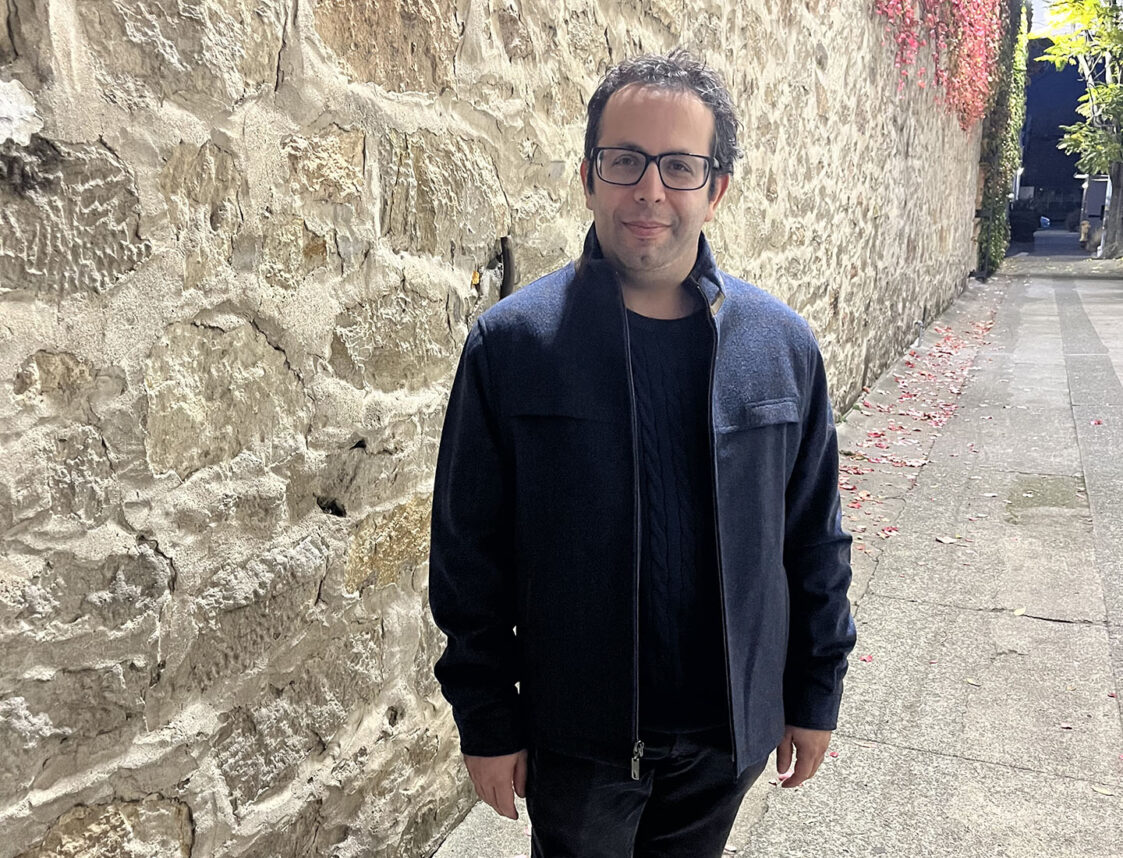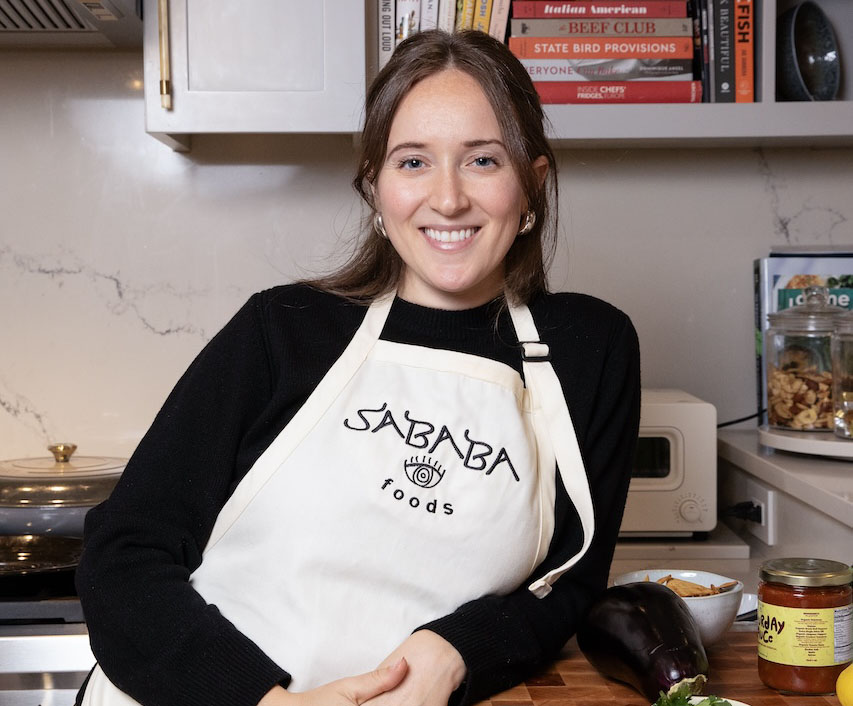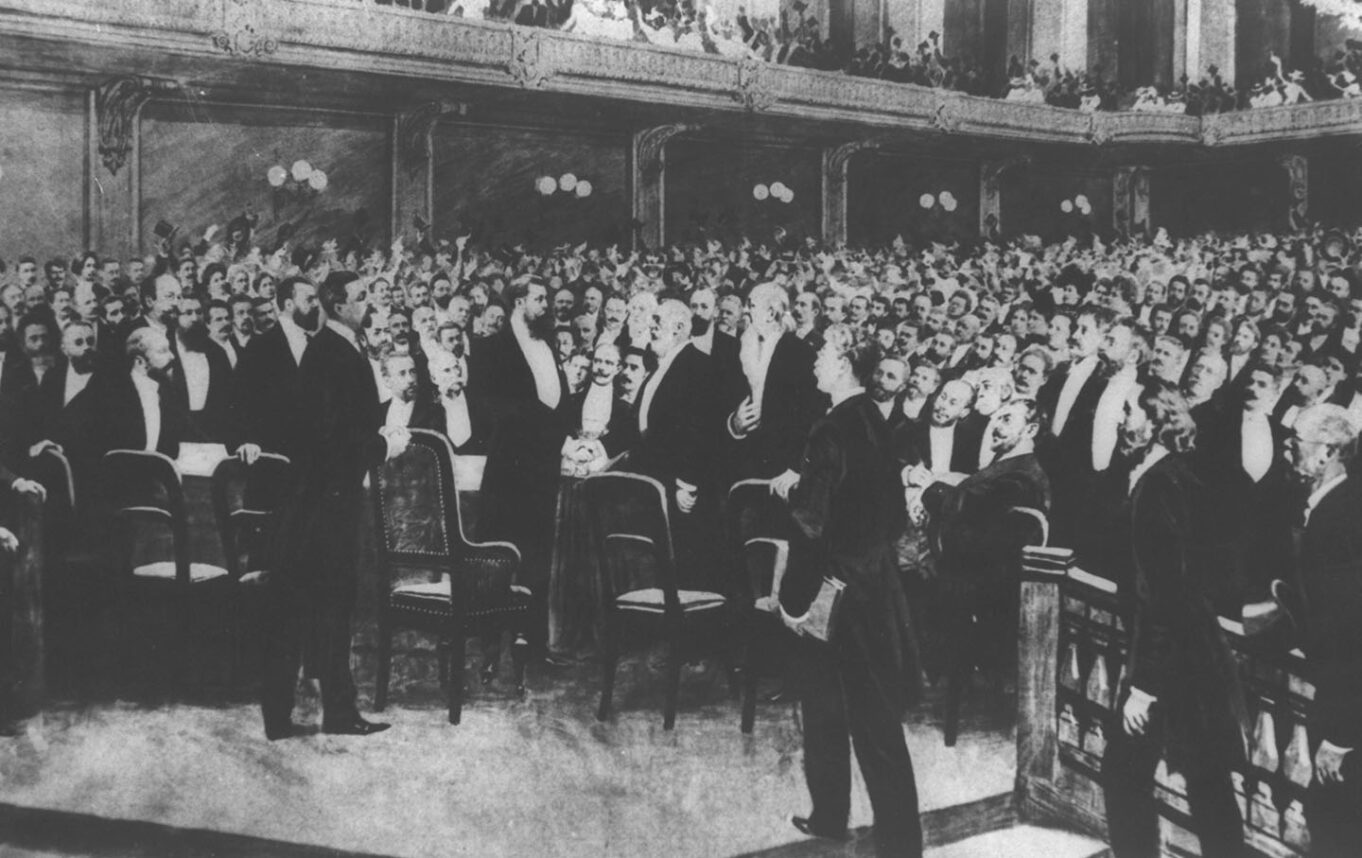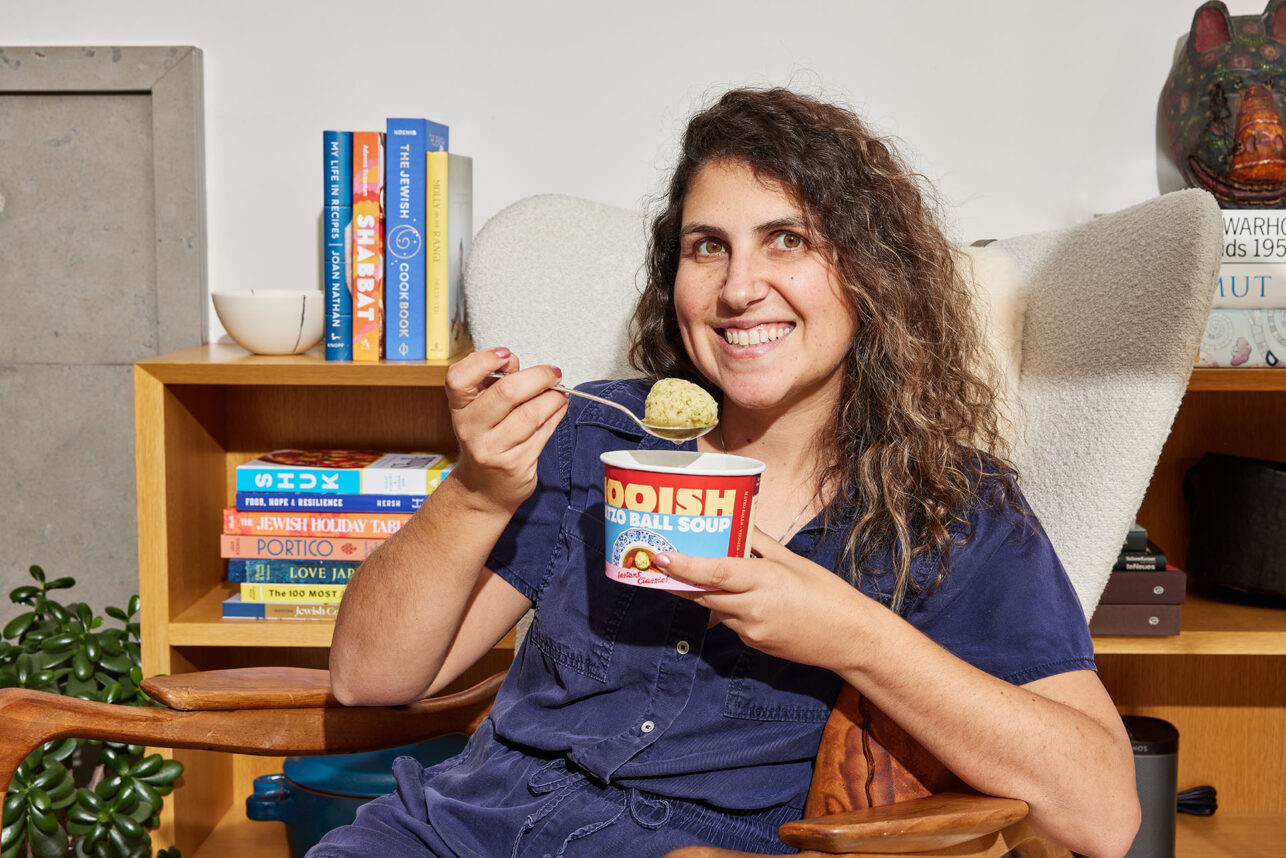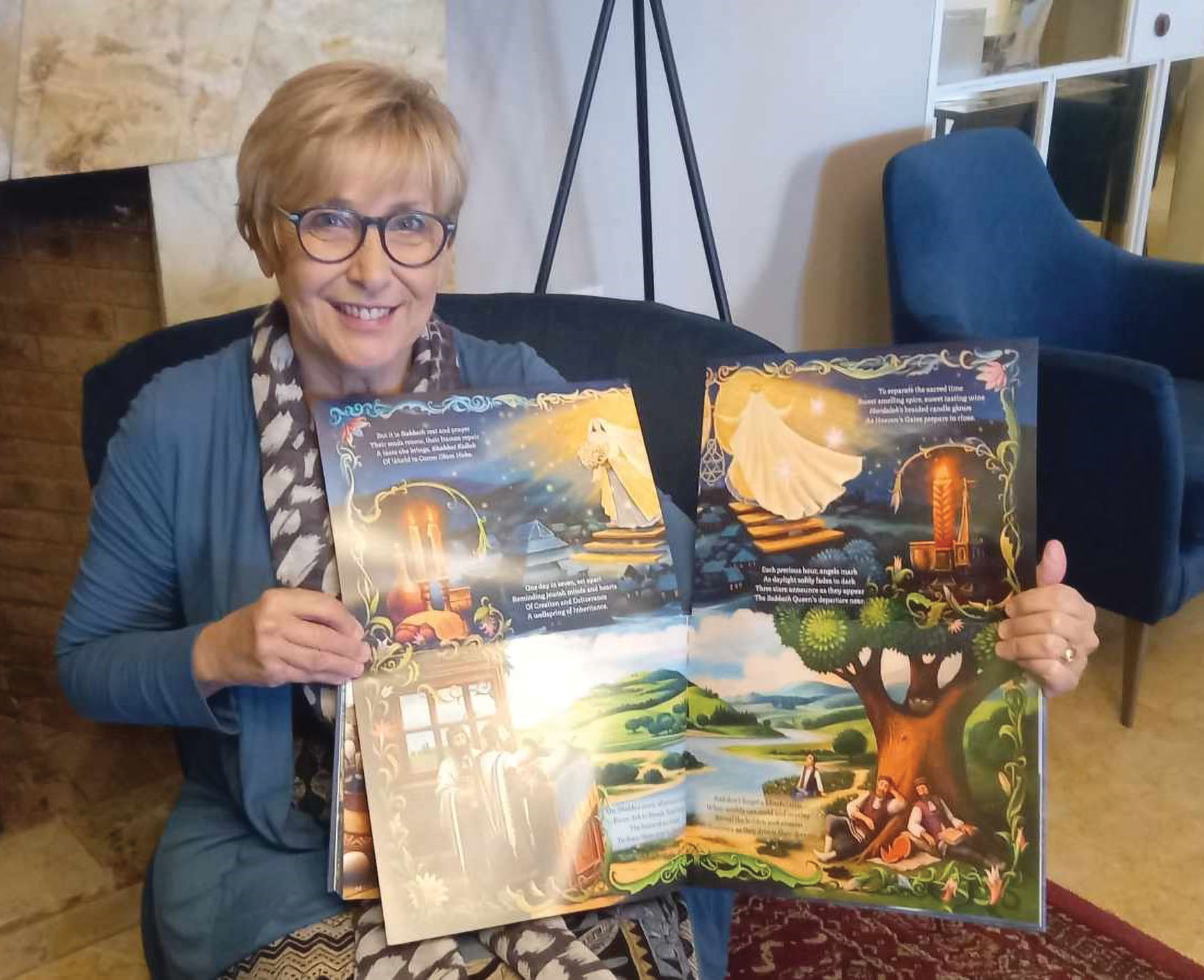
This is a story about a magnificently illustrated picture book, for both children and adults, inspired by a breathtakingly beautiful painted ceiling of a synagogue in Gwoździec, Poland, destroyed during WWI, and about the book’s author, Wanda Peretz, who is a storyteller, an artist, a creator of ceremonial textile art (Torah mantles, challah covers and wedding canopies) and educational murals and activity projects celebrating Jewish holidays, and a scenery designer for schools and children’s musical theater.
It is also about the original creation and then recreation of the synagogue and its exquisite ceiling, and about Peretz’s dedication, over ten years, to bring to fruition a celebration of that work of spiritual art in this deeply meaningful book, titled, simply, “The Ceiling.”
The history: In 1914, inebriated Russian soldiers set fire to Gwoździec’s “Old Synagogue,” reducing it—and the entire town three days earlier—to ashes. A description of this event is found in the Gwoździec Yizkor Book. All the other hundreds of shuls in Poland were destroyed by the Nazis during WWII.
For over 180 years, the tent-shaped cupola of this synagogue had been adorned by the resplendent artwork of Israel ben Mordechai Lisnicki and Isaac ben Yehuda Lieb HaCohen, who left their names, their lineage, the name of their hometown Jaryczów, and quotes from the Prophet Isaiah on two prominent signature medallions in the ceiling.
The fact that we have any record of all of this synagogue and its magnificent ceiling and bima, is thanks to the fact that between 1910 and 1913, photographer-artist Alois Breyer meticulously documented the synagogue’s interior and exterior. Today, these images are safeguarded in the Archives of the Tel Aviv Museum of Art. With the Museum’s permission, they grace the front and back inside covers of Peretz’s book, serving as poignant “endpapers” of what was lost.
Peretz pays homage to this synagogue, imagining also the artistic creation of its ceiling, via an enchanting Story-poem written by her, and the richly colored illustrations of Israeli artist Boris Shapiro, who is known for his paintings showing 17th century everyday shtetl life, often with a fantastical approach, that were influenced by the Dutch master, Peter Bruegel. Shapiro, who made aliya from the FSU in 1991, has had solo and group exhibitions in Israel, America and throughout the world.
For seven years, Wanda immersed herself in studying the Lost Wooden Synagogues of the Polish-Lithuanian Commonwealth, focusing on the masterful artwork that once adorned the prayer halls. Her dream and implementation of the book spanned a decade.
That’s quite a mouthful for what began as an invitation to the launch of the book “The Ceiling” at the ANU Museum in Tel Aviv (previously Museum of the Diaspora), an event I could not attend. But, as Wanda will be the first to tell you, there are no coincidences in life, so it should not surprise me that several days later, rather than settling for a Zoom interview, an unexpected change in schedule enabled me to respond to Wanda’s request to meet face to face in Jerusalem, on Shushan Purim.
There is also a back story of how this non-Jewish woman came to meet her Jewish husband and eventually convert to Judaism (though her interest in Judaism began long before she met him, when she was only a child) and her spiritual journey. Her Hebrew name is Ariella the daughter of Avraham and Sarah. “Ariella” means “lioness of God,” because, says Wanda, “If I was going to be part of the Jewish People, it was time to take on a new name…to be strong, stand up, be a Lioness of G-d… I want to be brave!”
Their love story is worth a book of its own.
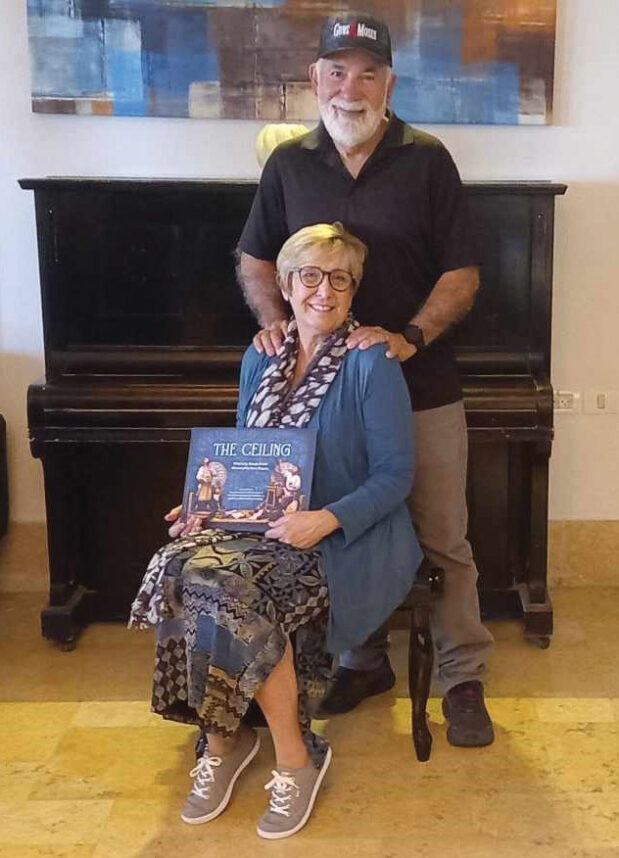
As Wanda carefully removes the shrink wrap from the book and excitedly lays it in front of me, but I am curious also about her background, about what led her to this project. So we will take a detour and then return to the book.
Wanda Peretz was born and raised a Presbyterian. Her father had been a commander in the U.S. Navy of diesel submarines in San Diego. When the family was stationed, due to his work, to Australia for three years, she saw the film “Fiddler on the Roof,” at the age of ten, and was spellbound. Having received the album, along with many other musical theater albums, from her grandmother, she learned all the songs by heart. “And I knew I had to have fringes [tzitziot], so I got my mom’s ski cap, which had long yarn fringes. And my dad’s little costume play beard. And we would perform the musical numbers. That was my beginning in musical theater, and I’ve designed probably three children’s theater sets of ‘Fiddler on the Roof.’
“Fiddler was my first introduction into my brain, into my databanks of these images, whether I was aware of them or not… And all my boyfriends were Jewish when I was growing up. When I finally told my parents that I’m converting to Judaism, they’re were like, well, we’re really not surprised.
“In my adulthood, I loved going to church. I loved doing the Bible studies with the women’s group, and I was very involved. But at some point, I came to a realization. I’d been raised that if you believe this certain thing, you’re going to heaven and everybody else is going to hell. And it didn’t make sense to me…. I thought, God isn’t that small.”
She started exploring new age ideas, and past life regressions, and arrived at the belief that, “This is not my only lifetime. I believe that still. I can’t prove it.” Then she heard about the concept of “gilgul” in Kabbala, and thought, “Judaism has room for all of my beliefs. But the thought of converting was not in my brain.”
At 19, she married (a non-Jewish man), had two boys, and after seven years they divorced.
Meanwhile, her husband Avi Peretz, who accompanied her on this trip (and met me with a big smile and a baseball cap with the slogan “Guns and Moses”), had his own story to tell.
His father was Moroccan, born and raised in Casablanca, and came to Israel in 1945. “My mom was from Canada. When the State of Israel was formed, she, along with so many other American and Canadian Jews, took buses to New York and boats to Haifa. My father was a policeman. She met him when she asked for directions. 30 days later they’re married.” His older sister was born in Jaffa, but then his mother wanted to move back to Canada, where he was born. “When I was six years old, my parents moved to L.A. and that’s where I grew up.”
Avi also married, adopted his wife’s son, to whom he is still close, and divorced.
Wanda and Avi met 35 years ago at a new age, self-realization retreat called “LifeSpring.”
Avi says, “I had been very much estranged from my Jewish world, though I was very much a Zionist. I was Israeli infused because of my parents, but the Judaism part after the age of 16, 17, it was like, okay, that’s enough.” So he was fine with Wanda not being Jewish.
He was enchanted by her bubbly personality, which jived with his own. And, Wanda says, “My parents really loved him. And my dad, who’s a very committed Christian, and my mother as well, he loved that he had this Jewish man who he could ask any questions of and nobody was trying to convert anybody or save anybody’s soul. So when we got married four years later, by a judge, I made my own chuppah. I wanted to smash a glass. My dad held one of the poles of our chuppah. It was looking out across Pacific Palisades, which is now burnt down.”
They married in March, 1994. In September, Avi said, “Let’s go on a trip. Would you like to go to Israel?” She said, “Sure, that sounds great.”
They made reservations. “And I thought, we’ll plan it so we’re staying at a kibbutz guest house – Shfa’im — on the Mediterranean, just north of Tel Aviv, and we’ll go to the beach on Yom Kippur,” says Avi. “So Yom Kippur comes, we get to Sh’faim, we check in and Wanda tells me, ‘You know, I’ve read that they’re having services here tomorrow for Yom Kippur.’
“So I said, ‘Yeah, that’s great; we’re going to be at the beach.’ And she says, ‘I think we should go to the services.’ So I say ‘No, you’ve never even been to services. You don’t even know what they are. Let me tell you, it’s brutal.’
“And she says, ‘I think we should go.’
“Now, one of the lessons that I learned from my first marriage is that just putting my foot down, period, doesn’t always work. So I said, ‘Okay, I guess I’ll go.’ It was sponsored and run by Chabad.
“So I go. The machsor doesn’t have English. It doesn’t even have nekudot (vowel dots). So I’m completely lost. I’m sitting with the guys. And she’s in the back with the women and they’re having just a grand old time.”
Wanda: “They totally welcomed me in. They made sure I had a prayer book that had the English as well. And they’re like, ‘This is what we’re saying right now.’… It was so much fun.”
“The time came to leave Israel. We’re headed back,” says Avi. “When we got married, we decided she’d had her two kids, I had my adopted son who was like a son, so we had three boys, so it was like, OK, no kids. We’re driving to the airport and Wanda says to me, ‘It’s a good thing we have a long flight because I have a couple of things I’d like to talk about.
“’One of them is I want to convert to Judaism.’
“And I said, ‘Do not think of converting to Judaism in the afterglow of your first trip to Israel. Come back to L.A. Wait a little bit, you know, like maybe five or 10 years.’
“I said, she can still do all the things she enjoys about Judaism, like Shabbat, and going to shul. But Wanda revealed, ‘I checked before we left for Israel and the conversion classes start at the University of Judaism next Wednesday. And they want you to go also.’”
Wanda picks up the story thread. “It was the University of Judaism where I first took the conversion course. Rabbi Neal Weinberg, who is Conservative, ran the Judith and Louis Miller conversion introduction to Judaism in L.A. I’m like, ‘I really want to embrace Judaism,’” she said to Avi.
“And oh, one more thing. ‘There’s a little girl who wants to come through. She wants to be born. Do you mind if we get pregnant?’
“Two years later,” says Wanda, “I completed my conversion course, went to the Beit Din, went into the mikvah eight months pregnant, and Rabbi Neal Weinberg married us in our living room in Pacific Palisades.” She took the Hebrew name Ariella bat (the daughter of) Avraham and Sarah for herself. “Ariella” means “lioness of God,” because, says Wanda, “If I was going to be part of the Jewish People, it was time to be strong, stand up, be a Lioness of God… I want to be brave!”
Six weeks later she gave birth to a baby daughter, Emma, “Eliana Shulamit.”
Avi: “So Wanda is in conversion and I had to go to the classes. All of a sudden I started learning Judaism from an adult’s perspective and I embraced it. I felt like I went through my own conversion and I wasn’t particularly happy about it, to say the least, and ended up being very deeply connected with synagogue life. I ended up being the president of a thousand family Conservative synagogue in LA, Temple Beth Am.”
They put their daughter, Emma, into a Jewish day school, which was far away from the Palisades, where they lived, so they moved into a Jewish neighborhood, the Beverlywood neighborhood, the Pico Robertson neighborhood of LA, “Which was absolutely delightful,” says Avi.
Wanda adds that before that, they belonged to the Reconstructionist synagogue in Pacific Palisades for two and a half years after she converted.
“While we’re at Kehillat Israel, the Reconstructionist synagogue, Emma is in preschool there. All of my Jewish life and creativity has been focused on Emma and her classmates and her friends and the Havura and the other parents that we gathered in a very tight group.
“Two of the parents died during our time there, each from cancer, one, a dad and one, a mom, a very close friend of mine. This is our group. The thing about moving to Scottsdale, Arizona [where they live now], and even though we joined two shuls there, the Conservative and the modern Orthodox one, I’ll never have that same group.
“That was two decades of time in Los Angeles that we were really connected. And everybody at Temple Beth Am knows who Wanda Peretz is because she does all the set designs and decorations for a decade. Even after our daughter left Pressman Academy, I was still doing sets for the musicals.”
She shows me the photo of a gorgeous mural that she painted in 2001 for the Pacific Palisades shul’s early childhood center. “This mural was the culmination of everything I learned in my ‘Judaism by Choice’ class.” She points out the artistic elements of the holidays, the Ushpizin on Succot, biblical characters, the numbers of S’firat HaOmer going through Yom Hashoah, Yom Hazikaron, Yom Hatzma’ut, “all the way up to Shavuot. I put myself in as Ruth. Eventually they painted over it, but they used this as a teaching tool for 16 years.”
Avi: “Five years ago, Wanda ran into someone, just chatting, a younger person, about 30 years old. He said, ‘That’s how I learned about the cycle of the holidays.’”
Wanda: “We were always taking classes. You’re always learning the next level of those little intricate details that nobody ever told you about at first, you learn more and more about the holidays and what the food means and what everything’s representing. And if you throw in a couple of Kabbalah classes, it’s like, okay, I’m not a male and I wasn’t even 40. But I love it because Kabbalah totally is like, I’m there. And Shabbat is always in the middle.” She points to the glowing Hebrew letters at the center of the mural. “So this says Shabbat Shalom.”
Avi: “When Wanda was converting, we lived in the Palisades, which a month and a half, two months ago, burned down to the ground… And Rabbi Weinberg had said, ‘You have to join and go to whatever your local shul is.’ And that’s part of the process.
“Wanda tells me there’s a synagogue here in the Palisades. It’s Reconstructionist. I’d never heard of Reconstructionism. So I said, ‘I don’t think it’s Reconstructionist. It’s probably Conservative.’ She says, ‘Well, you might be right, but here’s their card. And it says Reconstructionist.’ So I go, okay, so what is it? And to me, it was to the left of Reform.
“But it was interesting to me. They had a female rabbi, and Rabbi Steven Carr Reuben, the senior rabbi, played guitar on Friday night.
Wanda: “I had to have a sponsoring rabbi. So Rabbi Carr Reuben and Cantor Chayim Frenkel of that synagogue became my sponsoring rabbi and cantor.”
Avi: “And I said to Rabbi Carr Reuben, ‘I’m so comfortable here and I’m so uncomfortable here.’
“And he told me, ’Well, that discomfort may one day lead you into going back to where you were raised, in a Conservative, almost modern Orthodox type of Judaism. But this, here, for someone who abandoned the religion for 25 years, is a good re-entry point. Look at it that way. If you end up going past us, it’s okay. You know, we’re here to make sure that there’s something for everyone who thinks of themselves as Jewish.’
“And I said, ‘Okay, that’s fair enough.’”
Wanda: “When I went in for my meeting with Rabbi Steven Carr Reuben, it was in the old synagogue building and we rebuilt it…everywhere we go, we’ve rebuilt the synagogue, we rebuilt the sanctuary…and I had decorated many different spaces to make them into sanctuaries for secondary High Holiday services.
“So we’re sitting in his little office and now I’m just talking about how do we get involved with the Reconstructionist community? And he said, ‘Hold on one moment’ and he went out and he came back with a Torah scroll with the mantle on. And he gives it to me to hold. And I’m sobbing because I feel like I’m holding a baby. I feel like I’m holding something that’s precious and real and alive. And it was that moment. It was just like, okay, I’m home. I’m home. I know. I know.
“So that was with our Reconstructionist synagogue in Pacific Palisades, but we wanted Emma to be in a Jewish day school. And Kehillat Israel only had preschool.”
Avi: “We were already upgrading our practice. We were moving past Reconstructionism. Reform clearly wasn’t going to work. It was obvious to us that the Conservative world was probably the best fit. Although Wanda did go and check with the Orthodox, the Chabad on Pico Boulevard, when our daughter was there. And they kind of said, unless you’re willing to take on the Orthodox life, it’ll be a difficult experience for your daughter, because her friends would not be permitted to eat in your home, even if it is kosher, because it might not be their level of kashrut.
“About a third of our friends are Orthodox and two thirds are Conservative. That’s how I returned. My parents, my God, my parents were so happy.
“And we have a funny story. It was during the first four years of our being together. My dad was beginning to suffer from Alzheimer’s, and I kind of wasn’t believing it. And I remember driving with him, and him telling me, ‘You know, I really want you to marry Wanda.’ And the only thought that went through my head was, Oh my God, the Alzheimer’s must be worse than I think, because he’s forgotten that she’s not Jewish. So this story is now family lore that somehow in his pre-Alzheimer state, he already saw what I didn’t see, what I couldn’t see, that here we end up He died, just as Wanda got pregnant.”
Wanda: “And Emma would go over to his photographs and talk to him. When she was two years, three years old. And she’d never met him. He died before she was born. She’s talking to the picture.”
Avi: “And we had photographs of my mother and of Wanda’s parents and others. But she would be sitting there having these three-year-old conversations only with the picture of my father.”
Wanda: “During the 10 years that I’ve been obsessed with “The Ceiling,” I wanted to join a Torah observant women’s creative writing group. And during the one-hour pre-interview with the teacher, she said, “I love talking to you. I’ve looked you up online. I see that you do Jewish artwork, but you can’t be a part of my group because you’re not a Torah observant Jew. And my group of women are Torah observant, and I have to have that ‘fence’ around them… ‘I said, ‘That is so sweet. And I so admire that, and understand it.’ I told her that in the last year or so I had realized I was not a Jew, but that I had chosen Judaism as my spiritual path, and I was now calling myself a “sojourner” with the Jewish people, and that I loved the Jewish people. As a result of that one-hour interview, she ended up creating a second group called “Lamp Lighters” for Jewish women and “sojourners” who were not Torah-observant.
“And I got off the phone call, and I felt, I have to up my conversion, because now I do like my version of Judaism. Apparently, that’s not Hashem’s version of Judaism. Our version of observing Shabbat is having a lovely big meal, and people over, and lighting candles, and doing the hand-washing. And Avi doesn’t sing Eshet Chayil, because I’m not comfortable with Eshet Chayil. I don’t want to be an Eshet Chayil. I have a resistance to that.”
(“Well, you are,” I kind of whisper.)
“He reads a poem by Rabbi Naomi Levy Eshman. We also helped start their Nashuva group. And my daughter, when she was with us for Shabbat dinner, I knew this is all going into her programming, her computer banks….” Emma today is almost 29.
Avi: “Wanda’s journey is all about upgrading. She’s been talking about Orthodox conversion in various stages for the last 15 years. The creative writing teacher not accepting her to a group of Torah-observant women — that actually elevated her view of the Orthodox conversion. We’ve been together 35 years. I know her, that she’s absolutely heading in that direction. All I think about is, what does it mean for me? Oh my God.”
How the book came to be
Wanda’s excitement is palpable as she opens it.
She doesn’t believe in coincidences. She shared the following story at her book launch, and with me.
In 2001, she “wandered into a pop-up gallery in Beverly Hills” featuring artists from Israel, after dropping off their daughter in preschool. She fell in love with Boris Shapiro’s painting, Eishet Chayil. Calling Avi at his office, he balked and said a flat no to the $6,000 price tag. “But Eishet Chayil was calling to my soul. I went home and gathered every dollar I had for emergencies, emptied my personal savings account, even called my mom…I returned with $2,600 in cash and placed it on the counter, saying, ‘This is what I have. For that painting. Please.’
“In the painting is a Yiddish woman with a head covering, and she’s in the shtetl, and she’s holding lines that have laundry and cooking pots, and she’s got a baby carriage and a chicken at her feet, and her husband’s floating above her head, like Chagall, reading a book and sipping a cup of tea. And one of those lines is just gently looped around his ankle, so he cannot fly away.
“The art dealer, a bearded man wearing a kippah and wire-rimmed glasses, looked down at the pile of bills, then up at me. He took a deep breath and nodded. ‘Yud Hey Vav Hey,’ he said…” She didn’t understand the language, though she could draw Hebrew letters. “He said, ‘Twenty-six is the numerical value of “Yud Hey Vav Hey,” – the name of God – I will sell you the painting for $2,600.’”
One year later, Wanda met Boris, “by chance,” when she and her husband Avi were staying at the King David Hotel and Boris stopped by at the art gallery, that was showing his work. It was then that she purchased another painting by him, this one of Noah. Later, she confided to me over lunch, “I bought Noah, and now I realize it was because I also struggle with whether I should just be a Noahide and follow the Noahide laws [as she has not yet undergone an Orthodox conversion], which are said to be seven, but they go into like 33 specific ones, like, it’s not just that you don’t steal. You also don’t steal someone’s good name…So I can be a Noahide. I’m golden, I’m good, because that’s not being a Christian, but saying I came from the line of Noah, I’m a good human being, I’m from among the righteous nations.
“Or I get to do the extra work. I have to learn Hebrew. I can do it. I want to observe Shabbat properly. Keep kosher properly. All 613 commandments. Okay, I know some of those are for when the Temple is rebuilt, and I don’t have to worry about those, or about the ones that are for the guys.” She smiles, “I don’t have to worry about family purity anymore (since I just turned 64). So this could actually be easier than if I had done it earlier.
“I think it’s fascinating that the two paintings that I bought back then were Eshet Chayil, which is an Orthodox Torah observant woman in a shtetl, and Noah.”
Years passed, and in 2014, “On a whim, I signed up for an adult Jewish art class called ‘Reclaiming Wonder.’ There, I saw photographs of Polish wooden synagogues and their decorated prayer halls for the first time. I was captivated – and became obsessed really – with the animals, flowers and Hebrew calligraphy.”
Meanwhile, “Across the world, the reconstructed ceiling of the Gwoździec synagogue was being installed as the centerpiece of the POLIN Museum in Warsaw.”
Two years later, they stood beneath it and Wanda says she was, “Overwhelmed. Waves of goosebumps flood through me, and tears streamed down my cheeks.” Checking later in the POLIN museum bookstore, she searched for, and could not find, an illustrated children’s book on those synagogues. “They had none. How could that be?” she thought. And then made the decision. “I will write this book.”
Avi: “She starts showing me all of this research that she’s doing and I told her, you know, Wanda, Jews don’t know about this. When the Jews of today think about Poland, they think about death. They think about the Holocaust.”
Wanda discovered the names of the artists of the ceiling in that shul – Israel ben Mordechai Lisnicki and Isaac ben Yehuda Lieb HaCohen. “They visited me in dreams. I wrote rambling stories, gave them a crew of men with Yiddish names. A cart. A donkey named Mathilde. Storylines flooded my mind.”
And from that emerged her Story-poem. But she still sought a partner, an artist. And she remembered Boris and contacted him. “For seven years, we worked together…communicating only in written English,” never being in the same room, or even speaking on the phone. They sent sketches and painting back and forth across the ocean.
And then she discovered that Boris was from Lvov, in the Former Soviet Union, “the same province that both Israel and Isaac engraved in their signature medallions 300 years ago, when Lvov was part of the Polish-Lithuanian Commonwealth. Three artists, born within miles of each other, three centuries apart. A coincidence?” she asks. “Or the hand of God?”
Wanda points out another string of coincidences. On March 12, the same date that she had met Avi 35 years earlier, the same date on which she and Avi were married (in a civil ceremony, by a judge) in 1994, and the same date they were remarried, by a rabbi, in 1996, after her conversion, was the date in 2025 that the launch of “The Ceiling” was held at the ANU Museum, which included the presence of Magdalena Kukula, Head of Communications and Public Diplomacy from the Polish Embassy in Tel Aviv.
The recreation of the shul and ceiling on which the book is based was accomplished due to the imagination and perseverance of Rick and Laura Brown of Handshouse Studio, and their team of artists and students, as the centerpiece exhibition for the POLIN Museum of the History of the Polish Jews in Warsaw, Poland.
But how could they recreate a magnificently colored ceiling, subsequently replicated by Shapiro in Peretz’s book, if all they had to work with were sepia photos taken, thankfully (the only record of any shul ceiling in Poland from those years) between 1910 and 1913, by photographer and artist Alois Breyer, who documented the synagogue’s interior and exterior?
There is only one, small color study called the Breier. Using that as their Rosetta Stone, the Browns slowly build a library of Gwoździec’s colors.
Wanda speaks animatedly about the details in the ceiling, that include, in addition to Jewish symbols and verses and designs drawn from nature, Torah, and Talmudic stories, the signs of the zodiac, familiar, unusual, and some mythical animals, griffins (not cherubs) flanking the two Tablets of Law, a North American turkey (!), elephants (had they even seen elephants in Poland then?), and a back-facing deer. Wanda says, “Like in the Zohar.” Her interpretation is, ”This means ‘Don’t forget us. Turn back and look at us. Do not forget your people.’
“Look at the bear with the Tree of Life just exploding out of the bear…it’s like there’s life and babies and reproduction and the constant flowing of life. There’s a unicorn and a lion tussling. And the unicorn and the lion are on the royal standard of Britain’s royalty.
“This is for ‘strong as a lion and bold as a leopard.’ And this is Yaakov, who knows the key to everything is being present. Hineni. And there’s Noah’s Ark. Here are the righteous Gentiles of the nation. So this is not just for Jewish people. This is for everyone who is fascinated with being creative and making a contribution and making the world a more beautiful place.
”And Boris captures the vibrant world of Eastern European Jewish heritage.”
All of these breathtaking images illustrate the storyline itself, in which these two artists come from their home village of Jaryczów to Gwoździec to paint the synagogue ceiling and bima in the late 1720s. Wanda explains in her introduction that the Jewish community “most likely used non-Jewish timber workers, who modified the prayer halls’ original barrel-vaulted ceiling that dated back to 1640.” She did research to describe the paint preparation process that Israel and Isaac would have used, and in the Story-poem itself is embedded the description of their work, and how the Jewish community took care of their meals and lodging, all of them resting together to observe and celebrate Shabbat.
One of the verses includes both hope and a strong dose of reality, for when was it ever easy for the Jews?
A local resident (perhaps a rabbi, based on his clothing) says,
“Your work, when finished, must convey
Wonder…awe…for those who pray!
Shine hope to help dispel the fear
We sadly must acknowledge here.”
(I shudder a bit as I type those words, having just returned to my computer after spending ten minutes in our downstairs safe room, following a siren signaling an airborne “visit” from the Houthis.)
Both the Story-poem and the illustrations describe the artistic process, clearly a labor of love.
Women are present throughout. Cooking, baking (it was after all a traditional society) and Wanda says she insisted that every page that included children must include a little girl. Sometimes the children are helping by carrying water or in other ways, and we see them peeking curiously around the bedroom door at the sleeping artists. There are also whimsical squirrels near the brushes and paints. We see the community in the summer and in the snow.
The verse she writes on the Hineni page, as the poem continues to describe the process of the artists, is:
What is their secret hidden key?
Remaining present: Hineini
Like lions strong! Like leopards bold!
So swift the imagery unfolds!
I ask, “So since it was all photographed in sepia, how did they know what the colors were?”
Wanda: “Because there are a couple of oil paintings done by Isidor Kaufmann in 1898. This one is Portal of the Rabbi. We used that as our basis for the colors in the book.”
On the page where Shabbat is leaving, there is a lady in a flowy white gown. “The three stars of Havdalah are her attendants. They move around her, and they escort her out through a gate of heaven. And then the gate of heaven closes for another seven days,” says Wanda.
“And all these (she gestures to the landscape pages) are the Carpathian Mountains and the rolling hills in the Ukraine and the Soviet Union that are so beautiful. This is what Boris probably idealized a bit, but this is what he grew up looking at outside of the city. So it’s all connected, all connected.
“And then a week before this went to print, I’m working with the wonderful graphic designer, Irit Harel, and I said there have to be three blessings. We have the Traveler’s Prayer. We have “Poteach et Yedecha.” (“Open your hand and satisfy the desire of every living thing.”) We need a Shehecheyanu.
“So she just said, no problem. Two seconds later, we have a Shehecheyanu flowing across the page.
“Here’s the rabbi. The musicians are playing Klezmer music. They’re going to have a party afterwards. This isn’t Shabbat. It’s not a yom tov. It’s just them saying the ceiling and the bima are complete. Everyone, come in, come in, and look at the ceiling. The joy!”
The creative artistic process
Wanda says to me, “I want to share with you the process that Boris and I went through. We don’t speak a common language. We already established that in 2002 during the second intifada when we met and we were both young.
“I contacted him 16 years later and I said, ‘I’ve written this poem. I really want to do a beautiful, beautiful book that people will want to have on their coffee tables. Have you ever illustrated anything for children?’ I didn’t know about all the children’s books he’s illustrated for Chabad, and they’re amazing. He does spiritual concepts in children’s illustrations that children will look at and say, ‘Oh. I get it!’
“I sent him descriptions. And he started sending me these sketches and I made comments on them.” She opened a portfolio of their working file, including changes Boris had made based on Wanda’s requests.
Avi adds, “Boris, when he was a young man, was in the red army. At 18. And you know what they had him doing? Painting portraits of generals. Boris said, ‘I had a lot of business.’”
Wanda: “I kept sketching and sketching. This is how they did the lighting… and this is when they read the Torah there’s a line inside the wooden bima in Hebrew calligraphy that says ‘Behold I make aliyah when I read from the Torah’ and I’m connecting the Shekhinah to Hashem, like that’s what’s happening metaphysically when they read from the Torah… the whole square room is 36 feet from top to bottom…and there’s a lattice, a circle that leads to the inside of an attic. It’s not a window to the outside world; it’s where the Shekhinah looks in.
“There’s a whole thing about lattices in wooden synagogues and in other synagogues; there’s always a lattice because it’s like, Who is watching my every word? Who knows my thoughts? Who knows the actions I’m taking? The Shekhinah is always there.”
Wanda shows me some sketches she has planned for a future coloring book. “We’re going to make it much more affordable.” They invested a great deal in this hard-copy book, and made 1000 copies. It is of the highest quality, with thick chrome pages, gorgeous color and exquisite printing and production level.
Avi: “It was a labor of love, for her primarily, but really for both of us, as well as to say, this needs to come into being.” They had Jerusalem Fine Arts (known to be the best) prepare the pages, “And they told us, ‘You know, if you print it in China it’ll be a fraction of the price’ and we said no, only in Israel.” It was printed at A.R. Printers in Tel Aviv. It was recently submitted to the National Library of Israel and is already catalogued in the Tel Aviv Museum of Art Library.
As Wanda said at her launch, “’The Ceiling’ has been my special assignment – to describe these artists, to celebrate their work, to bring a moment of Jewish life in Poland back to life…It is my gift to my entire Jewish family, to allow them to see beauty and love of life in centuries of extraordinary Jewish presence in Poland and surrounding areas. Those incredible Jewish souls deserve our recognition and acknowledgement.”
The story ends (spoiler!) in a magnificent spread over two pages, with the line flowing across the heavens, from the Traveler’s Prayer, in Hebrew, “And return us to our home in peace” and the words:
But now it’s time to say “Shalom”
Send pleased but weary artists home
A future work now calls to them…
For next year in JERUSALEM!
May it be so speedily, in our time.
Chag sameach.
Wanda is generous in sharing the credits. She has two pages of thank yous in the back, including rabbis and scholars she consulted. The Tel Aviv Museum of Art permitted her the use of images from their archives. Mr. Shapiro’s artwork in The Ceiling that is based on the restoration of the Gwoździec Synagogue Ceiling and Bimah is used with kind permission of Handshouse Studio, Inc., Norwell, Massachusetts. The restoration is copyright ©️ 2012 by Handshouse Studio, Inc. All rights reserved. www.handshouse.org. Ms. Peretz is grateful for the documentary film “Raise the Roof” by Trillium Studios, from which she writes she drew great inspiration. The Gwoździec Synagogue archive project is at www.woodensynagogue.org.
The Ceiling can be ordered and shipped from the author with a personalized Thank You letter for a 100% tax-deductible of $180 donation to JewishGen-erosity’s Yizkor Book Project. https://www.wandaperetzauthor.com/landing/
Toby Klein Greenwald is an award-winning journalist and theater director, and the editor-in-chief of WholeFamily.com.
